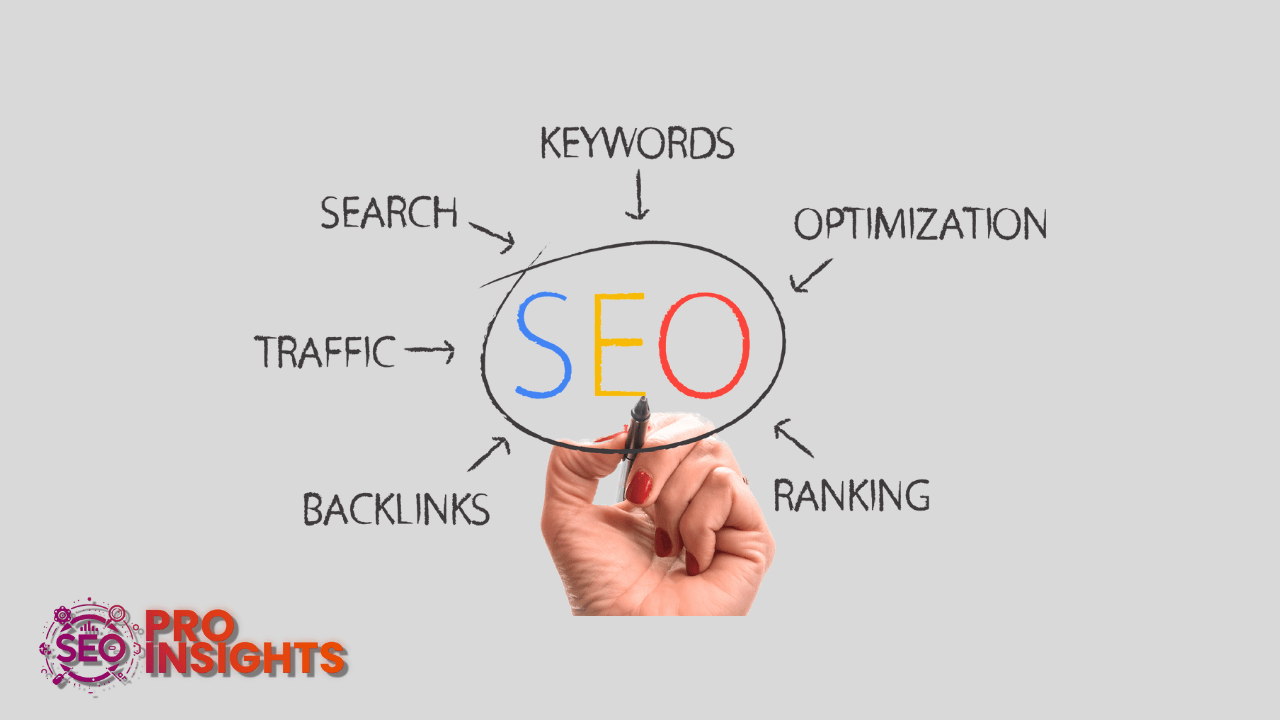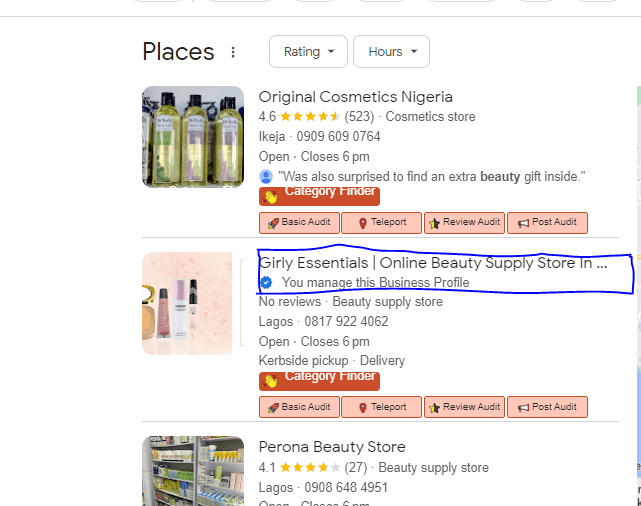SEO plays a huge role in a business’s online visibility, and no matter what industry you’re in you need a solid SEO strategy to get your name out there. Whether you own an eCommerce website or serve a local area, getting it right with SEO will help you show up where your customers are searching.
In this post, we will discuss the distinct technical SEO needs for eCommerce and local services businesses and practical ways to optimize your website for the right kind of traffic that converts.
SEO is not a one-size-fits-all solution. The way you use SEO depends on your industry and what your ideal customers are searching for. Typically both e-commerce and local services businesses employ SEO strategies, but with a different focus when it comes to their target audiences.
First, let’s discuss the SEO needs and strategies for an e-commerce website.
What is e-commerce SEO?
eCommerce SEO is about driving traffic to your online store organically by ranking for search terms people often use in your niche to gain visibility and conversion.

Why SEO is Important for E-commerce Websites?
Let’s say someone searches for a product you sell – you would want your website to rank at the top of those search results to drive more traffic and conversion right? E-commerce SEO provides you with the opportunity to target your potential customers with the right keywords and delight them with your high-quality displayed products and compelling call to action.
People are not going to buy what you sell if they can’t find them online. Hence, the importance of conducting an eCommerce SEO is for potential customers to effortlessly find your products when searching online. You can do this without spending a dime on ads.
Below are the various needs of technical SEO for eCommerce:
1. Your Product Pages
The product pages are like the passport your customers need to access your website, a poorly optimized product page will be lost in the search results. As an SEO specialist or website owner, you need to ensure each product has a specific page designed and optimized with relevant keywords and phrases your searchers use. Some areas to take cognizant of when optimizing product pages:
- Product Titles and Meta tags: Add relevant keywords and compelling descriptions of the products or services you sell to pique searchers interest. Including power words like “Best” in titles can also help with rankings.
- High-Quality Images and Videos: Use professional visually appealing product images as well as videos that showcase your offering.
- Detailed Descriptions: Write informative descriptions that focus on the benefits of the products to users not just features, this way you can paint a picture of how your product will solve their problems.
- Clear Calls to Action: Tell visitors what you want them to do (like., “Add to Cart”, “Buy Now,” or “Learn More.”).
- Schema Markup: Use product schema markup to help search engines understand your products for better ranking. To generate a product schema for your products use the Technical SEO tool.
2. The Architecture of Your Site
A well-organized website is important for the visibility of an eCommerce site. Both search engines and buyers value a clear structure. Keep it simple and user-friendly to make searching for products a breeze.
Picture your website as a neighbourhood, and you want to make it easy for anyone to get from the main street (homepage) to any house (product page) without taking a billion turns and getting lost. So you want to make sure that on your homepage, you have clear categories and subcategories that will lead your potential buyers to what they are looking for.
According to experts, a good guideline is to allow visitors to reach any product page on your site from the homepage in just 3 clicks or less. It’s kind of like having a maximum of 3 streets to turn down before arriving at your destination. This straightforward setup isn’t just helpful for Google’s crawlers to easily navigate and understand your site. It also creates a smooth and user-friendly experience for your visitors trying to find what they need.
3. Site Speed
With all those images and product pages, e-commerce sites need to be extra mindful about loading speeds. Today’s internet users have the patience of a hungry toddler – they want things NOW. According to Kissmetrics, nearly half of visitors expect a website to load in less than 2 seconds. And if it takes more than 3 seconds, about 40 percent will just say “later” and bounce off your site. Consequently, your website speed has a great impact on your bottom line.
To get an analysis of your site speed I recommend using the Lighthouse Chrome extension, or GTMetrix to get a speed analysis or Google page speed test.
To keep visitors from dashing off your site, e-commerce sites have to optimize images and videos on their product pages. The use of browser caching, compressing images, and distributing your content via a CDN are just some of the tricks to speed up your site load times.
4. Internal Linking
Internal linking is all about giving both search engines and visitors helpful pathways to navigate your website. Linking to related products helps Google get a grasp of the structure and hierarchy of your site.
There are two main ways Google finds web pages to include in its search results. First, there are pages that Google has already visited and “crawled” in the past, so it knows about them. But Google is also constantly discovering new pages by following links from the pages it already knows about.
So if Google has crawled Page X before, and Page X links to a new Page Y that Google hasn’t seen yet, it can then find and crawl Page Y by following that link.
Additionally linking to one page on your ecommerce site strengthens the overall website structure and passes authority from one page to another.
5. User’s Reviews and Ratings
Customer reviews and rating has a large impact on SEO and serve as social proof. Google factors review in its ranking factors, as they indicate experience, satisfaction, and quality.
They’re pretty much digital word-of-mouth these days. A simple but super effective strategy is to reach out to both your new and loyal, long-time customers to leave a review on your Google listing. Setting up an automated email to ask for a review after a purchase works well too.
Just a friendly little nudge like “Hey, hope you loved your new purchase as much as we do! If so, it’d mean a lot if you left an honest review on our Google listing.”
But not just on Google listing. Also encourage your audience to share their experiences on other big review sites like Angi, Facebook, and Yelp. The more reviews scattered across the internet, the more social signals your site gets.
What Are the Benefits of E-commerce SEO
Having highlighted the need for technical SEO for eCommerce above. Here some benefits of SEO for eCommerce website;
- Boost Brand Recognition
When an eCommerce SEO is effectively implemented your website is more likely to show up at the top of search results when people search for products or services related to your brand. This increased online visibility helps build brand awareness and familiarity among potential customers.
2. Targeted Traffic
You can attract visitors who are actively searching for what you offer by optimizing your site for related search terms. Visitors who land on your sites are more likely to convert into paying customers.
3. Cost Savings
While paid advertising like Google Ads can be effective, it can also get expensive quickly. SEO, on the other hand, is a more cost-effective way to drive qualified traffic to your site over the long term, reducing your reliance on paid search campaigns.
4. Filling the Sales Funnel
SEO isn’t just about driving traffic; it’s also about nurturing visitors through the entire sales funnel. Optimizing your website’s content and user experience, can guide potential customers from initial awareness to consideration and finally to conversion.
5. Expanded Remarketing Opportunities
When visitors land on your well-optimized site through organic search, you can then remarket to them through targeted ads and promotions, increasing the chances of bringing them back for a purchase.
After going over the key technical SEO requirements for e-commerce sites, let’s shift our focus to businesses that operate a bit differently. For instance, if you’re a local service provider, like a plumber, electrician, or landscaping company.
Your target customers aren’t browsing the internet to make purchases; instead, they’re looking for reliable professionals in their area to handle specific tasks or projects for them.
The SEO strategy businesses like these need have to be tailored to their unique goals and focus audience. While some of the technical aspects we discussed for e-commerce sites still apply, there are additional considerations to keep in mind when optimizing for local search visibility.
Local Business SEO
Local SEO enables businesses to get found, get selected, and most importantly get more customers from relevant nearby searches specific to their product/service area.
To get your business visible in local search results, you need to set up a Google My Business profile.
So, after setting up a Google My Business Profile (GMB) account, it does not end there. There is still much to be done and more to be done for your business to be discoverable on local search results.
Before diving deeper into this, as an SEO specialist from my experience it is important to maintain a correct and consistent NAP (Name, Address, Phone Number) when setting up a GMB account and across all the internet because Google places value on accurate business information for its users.
One vital step in getting Local SEO right is ensuring every single mention of your business name, address, and phone number is completely consistent, everywhere online.
Why does SEO for local businesses matter?
Local SEO is not just about getting noticed – it’s about attracting the right kind of traffic and showing up to those who are already interested in what you offer because they’re searching for it locally.
For instance, someone searches for “restaurants near me” or similar local-intent queries. By this, such a person has already expressed a pretty clear interest in the type of business you’re offering.
Studies show that around 77% of consumers rely on Google to find information about businesses in their area. Although Google is not the only option, it has become the preferred platform for finding business information.
So if you have a local business that you want to take online, your target market will be customers in your own city or surrounding region. In other to improve your local SEO and discoverability for these nearby searchers, there are a couple of key strategies to implement:
- Local Keyword Research.
Make a list of local keywords and phrases that potential customers use when searching for your business services or products in your area.
These “local keywords” allow you to optimize your website and online presence to show up in relevant search results for people looking for what you offer near their current location.
Use keyword research tools like Google Keyword Planner to check local search volume and competition. The goal is to find a good mix of local keywords with decent search volume that are relevant to what you offer and where you are located while keeping competition levels in mind.
- On-Page Optimization for Local Keywords
After conducting thorough local keyword research, it’s important to properly improve key on-page elements of your website to target those localized terms and phrases.
This helps the search engines understand where your business is located, what you offer and the geographic areas you serve in order to influence your local ranking. Some key on-page elements to optimize are:
Header Tags
The header tag is one of the most important on-page elements for SEO. Include your primary local keyword target towards the front of the title tag. For Instance, “Lagos Plumbers | 24/7 Emergency Plumbing Services in Lekki, Ikoyi & VI”. Another example is “Online Beauty Store in Lagos Nigeria”

Meta Descriptions
Although they are not used for rankings, meta descriptions appear under your listing in search results. Compelling descriptions with a local focus can improve click-through rates.
For example – Reliable Plumbing Services in Lagos, Nigeria. Available 24/7 for Emergencies. Call 08123000000 Today!
Headings
Use H1, H2, H3 etc. Incorporate local keywords in your header tags where necessary. This helps search engines figure out what your content is about and how important different topics are.
Body Content
When writing content for your website pages, it’s advisable to use keywords and related phrases that are relevant to your local area and services.
Keep the flow by naturally mentioning the city you’re based in, the specific neighborhoods you serve, and other location-related details can make your content more engaging and relatable for potential local customers.
Internal Linking
As you create content for your website, be sure to link between related pages using descriptive anchor text that includes relevant local keywords. This practice helps search engines comprehend the structure of your site and the specific topics and services you cover.
Using keyword-rich internal links offers valuable context about how your content relates to each other and to your local business.
HTML Structure
Using specific HTML tags and incorporating local details such as addresses and business information can greatly improve how search engines understand your website’s location. These strategies signal to search engines where your business is located, making it more likely for your site to appear higher in local search results for your area.
URL Structure
While setting up the URL structure for your local business website, add details about your geographic location and main targeted keywords.
This results in tidy, user-friendly URLs that are easy for visitors to understand and remember. A good example is a URL like “www.yoursite.com/lagos-plumbing-services” which instantly conveys that the page is about plumbing services offered in the area of Lagos.
- Optimize Your Google Business Profile
Maintain a correct and complete information about your business. As I mentioned previously,. Information like business name, address, phone number, opening and closing hours, services/products, and other vital details.
After ensuring proper listing, upload high-quality photos that showcase your business to your audience. For a local business, clear exterior and interior photos that give potential customers a representative look at your space should be used on the profile. Photos should also include your team and product/service offerings
An important factor in your visual media is ensuring that the images are geotagged. Geotagging simply means embedding location metadata, such as GPS coordinates, into the photo file itself. This helps search engines uniquely link the images you upload to the specific geographic location of your business listing
- Local Citation Building
If you want your business to rank well in local searches in Lagos, having consistent listings across popular local websites and directories is essential.
The idea is to have your NAP information listed identically across as many relevant, trusted local websites and apps as possible serving in your region.
Consistent NAP listings help reinforce your local presence and can significantly boost your chances of ranking well in mapped local finders and results pages when people search for businesses like yours in your location.
- Local content creation
To boost your local business visibility in local search results, creating content that is highly localized and geo-specific to their area is an important strategy. This type of localized content helps reinforce the connection between your business and the particular city, town, or region you are trying to target and get found in.
- Local Schema Markup
Adding appropriate schema markup to your website’s HTML is like giving search engines a cheat sheet of the most relevant local business facts they need to properly categorize your listing and display it in geo-targeted searches.
While it’s not an absolute ranking factor, using schemas can improve your local SEO by making it crystal clear how your business relates to the geographic areas you want to target.
Some of the key schema properties to include for local businesses are:
- Local Business Details
- Opening Hours
- Reviews/Ratings
- Images/Videos
- Contact Info
- Maps/Directions
- Events
Using proper local business schema will make it easier for search engines to understand your business’s precise location, areas served, contact details, reviews, media content, and other core geographic information.
- Online Review Management
As a local business, paying close attention to online reviews can make or break your ability to draw in new customers from the local area.
These days, people heavily rely on review sites and apps to get a sense of a business’s reputation before deciding to give them a try.
Let’s say you run a business in Lagos the more positive reviews you have on major platforms like Google listing and Nairaland, the higher your business is likely to rank in local search results.
It’s not just about racking up reviews though – the quality and sentiment expressed in those reviews also carries a lot of weight.
Glowing reviews from happy customers can work wonders for attracting new faces through the door, while a string of negative feedback can just as easily deter potential customers too.
Bottom Line
E-commerce businesses essentially need to focus on optimizing their product pages, category pages, and site architecture for a national or global audience searching for specific products.
Local businesses, on the other hand, need to prioritize optimizing for local search queries, adding location-based keywords, and ensuring their NAP (Name, Address, Phone Number) listings are consistent across the web.

